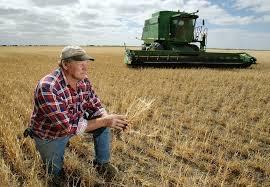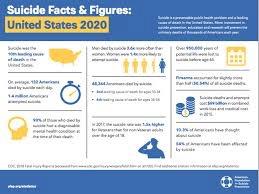 The topic of mental wellbeing in the agricultural sector is highlighted by recent anecdotal reports and statistical evidence for suicide among U.S. farmers. Based on 2017 data, the Centers for Disease Control has determined that death by suicide among farmers attained 43 per 100,000 population compared to 27 per 100,000 for all occupations. The death rate by suicide in the U.S. population was 14 per 100,000 in 2017 with 11,600 in 2021 to date. In the U.S. firearms are used in approximately half of all suicides. Farmers invariably either own or have access to guns that are too frequently involved in loss of life.
The topic of mental wellbeing in the agricultural sector is highlighted by recent anecdotal reports and statistical evidence for suicide among U.S. farmers. Based on 2017 data, the Centers for Disease Control has determined that death by suicide among farmers attained 43 per 100,000 population compared to 27 per 100,000 for all occupations. The death rate by suicide in the U.S. population was 14 per 100,000 in 2017 with 11,600 in 2021 to date. In the U.S. firearms are used in approximately half of all suicides. Farmers invariably either own or have access to guns that are too frequently involved in loss of life.
The disparity in suicide among farmers was recently the topic of an informative interview with Adrienne DeSutter, a counselor and farmer in Illinois. Interviewed by Tiffany Dowell Lashment of the Texas Agricultural Law Blog, Adrienne discussed factors contributing to suicide, prevention and resources to prevent deaths. DeSutter pointed to a combination of factors that are contributing to stress that may result in depression and ultimately, in the most severe cases, contributes to suicide. Individual farmers frequently work in isolation and feel that they face a variety of challenges on their own.
Mental health is essentially a taboo topic in agriculture and farmers and workers who are depressed have difficulty in expressing their fears and conflicts with those who may be willing to listen or to counsel. It is estimated that there are 63 mental health professionals per 100,000 population in rural areas compared to 146 per 100,000 in metropolitan locations.
Farmers are exposed to a number of stress factors which are basically out of their individual control. These include weather, livestock and plant diseases, pests, market fluctuation, and in some cases restrictions imposed by federal or state mandates. Farm debt is at an all-time high at approximately $400 billion of which $150 billion is represented by real estate. In 2017, commodity prices were impacted by the trade war with China, contributing further to debt despite Federal relief programs. It is estimated that in 2019 almost 40 percent of farm revenue was derived from government disbursements. In 2020, the farming community, along with the remainder of the U.S., faced COVID that resulted in disruption in livestock processing, financial losses that complicated farm operations. Despite the approximately $28 billion in compensation for the trade war and additional funding as a result of COVID, many farmers suffered losses.
 With a rise in commodity prices during the past six months, there has been some measure of improvement although inflation in labor, energy, and other inputs have increased production costs. Psychologists point to farmers losing a sense of self-worth as a result of financial stress despite the fact that factors contributing to reduced earnings have been in large measure been beyond their control.
With a rise in commodity prices during the past six months, there has been some measure of improvement although inflation in labor, energy, and other inputs have increased production costs. Psychologists point to farmers losing a sense of self-worth as a result of financial stress despite the fact that factors contributing to reduced earnings have been in large measure been beyond their control.
DeSutter, through her professional training and experience in rural Illinois, advises her clients and those in the farming community to recognize limitations and to adjust to the realities of their situation. She advises farmers to alleviate worry by talking to a sensitive listener, either a family member, a minister, a friend or a professional. She emphasizes the need to focus on the positive, and in many cases, to simplify lifestyle. She advocates a regular pattern of eating, sleeping and exercise, to plan activities and to address individual problems that can be solved in order to avoid an overwhelming sense of despair. To maintain a sense of self-esteem, DeSutter advises that self-worth is not measured by assets but by achievements. Adrienne notes the additive effect of individual stress factors that tend to accumulate. This requires resolution of individual problems on a continual basis.
As depression intensifies, those afflicted should investigate resources to reestablish a sense of wellbeing to avoid depression and suicide. Physicians, especially in farming areas, are sensitive to the stressors to which their patients are subjected and can refer to available local resources. In an emergency a 911 call is justified and may save a life. The National Suicide Prevention Lifeline (1-800-273-8255) and the Crisis Text Line (Hello to 741741) are valuable resources and should be accessed with any indication of despondency.
The discussion on suicide with DeSutter involved crop farmers and those with mixed animal and row-crop operations. Contractors in the broiler and turkey industries have a more favorable situation in that integrators provide chicks, poults or started pullets, feed and assume the financial risks associated with inflation and the markets. Contractors are however subject to the stresses associated with achieving performance standards either self-derived or imposed through a tournament system. The threat of termination with a resulting obligation represented by loans on capital investment in housing and equipment may be a source of ongoing concern to contractors. It is questioned whether service people following standard company operating procedures can diagnose stress and depression in an under-performing contractor in order to refer the farmer to appropriate counseling.
As we progress from the restraints and impacts of COVID, we should address the issue of farmer suicide and the even greater problems of sress and depression. The emergence of any disease causing an annual fatality rate of 43 per 100,000 would result in immediate action by health authorities with epidemiologic investigation and remedial action. We appear to tolerate an ongoing problem that is depriving farmers of their lives and creating grief, guilt and remorse among family members and survivors of a suicide victim.